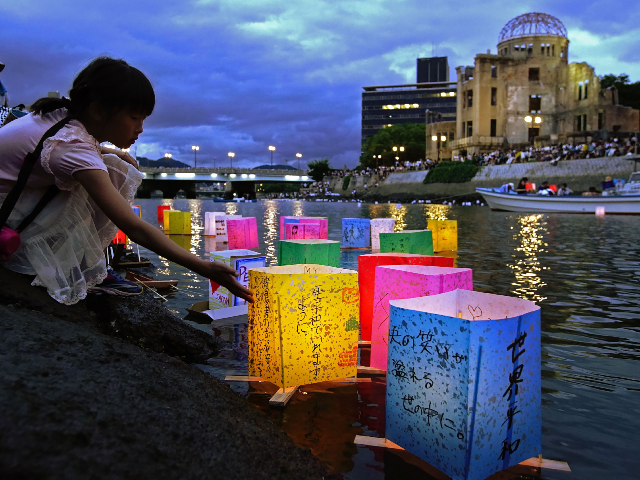A crowd of 50,000 people gathered in Hiroshima, Japan, on Tuesday to observe the 74th anniversary of the American bombing of the city with a nuclear weapon, the first use of an atomic bomb during war in history.
Hiroshima Mayor Kazumi Matsui and Prime Minister Abe Shinzo spoke at the event, the former urging the world to eradicate nuclear weapons and for nuclear states to sign the United Nations’ Treaty on the Prohibition of Nuclear Weapons (TPNW). Those gathered offered a silent prayer for the victims and honored the survivors of the 1945 bombing that had died in the past year. Authorities identified 5,068 hibakusha, or nuclear survivors, who died between the last anniversary observance and the one this week. Fewer than 150,000 survivors remain alive, the Japan News reported, the lowest recorded number so far.
In anticipation of the anniversary, authorities also opened a joint Japanese-American radiation research facility in Hiroshima to the public.
At the time of the bombing – August 6, 1945 – Hiroshima was a city of 350,000 people. An estimated 70,000 died in the immediate aftermath of the bombing and thousands of others suffered radiation illnesses, severe injuries, and longstanding trauma. American military authorities at the time chose to drop the nuclear weapon, and a second on the city of Nagasaki less than a week later, to avoid the prolonged bloodshed of an infantry invasion of Japan. Many war strategists believe the bombings ultimately led to the conclusion of World War II.
In addition to the 50,000 in attendance, representatives of 92 nations joined Japan to observe the anniversary, the Japanese broadcaster NHK reported, among them the United States, France, and Russia. The only nation to not send a representative that is a nuclear weapons party to the Non-Proliferation Treaty (NPT) was China, which Imperial Japan conquered during the war, committing a variety of human rights atrocities against the pre-communist state.
The observance traditionally begins with a moment of silence at 8:15 a.m., the time the bomb dropped.
Matsui read an eyewitness testimony from an unnamed 18-year-old at the time of the Hiroshima bombing on Tuesday. “They were nearly naked, their clothes burned to tatters, but I couldn’t tell the men from the women. Hair gone, eyeballs popped out, lips and ears ripped off, skin hanging from faces, bodies covered in blood — and so many,” the young man said.
The mayor asked world leaders to “visit the atomic-bombed cities, listen to the hibakusha, and tour the Peace Memorial Museum and the National Peace Memorial Hall to face what actually happened in the lives of individual victims and their loved ones.”
“I want our current leaders to remember their courageous predecessors: when nuclear superpowers, the US and USSR, were engaged in a tense, escalating nuclear arms race, their leaders manifested reason and turned to dialogue to seek disarmament,” he added, culminating in a call to sign the TPNW, a cause widely supported by Hiroshima survivors.
Japan’s Mainichi Shimbun noted that it was the first time Matsui made a public call to sign the TPNW. Prime Minister Abe has not similar supported the treaty, and many within Japan support alternatives to ensuring an end to nuclear proliferation that do not rely on the United Nations, which has no enforcement mechanism for its laws.
Abe urged dialogue between nuclear states and those who do not possess the weapons to ensure they are not used in his speech Tuesday.
“Japan is determined to build a bridge between nuclear-weapon states and non-nuclear weapon states, tenaciously promote dialogue by gaining cooperation between the two, and lead the efforts put forth by the international community,” Abe said, according to Mainichi.
In addition to the ceremony, the Radiation Effects Research Foundation opened its doors this week to show the public what it has been developing. The joint Japan-U.S. project will also open a branch in Nagasaki on August 9, the date of the nuclear bombing of that city.
“The research facility has been collecting data from hibakusha since the institute was established in 1975, when it succeeded the research efforts of its predecessor, the Atomic Bomb Casualty Commission,” the Japan Times reported. The scientists working there are studying the health effects of being exposed to radiation of the magnitude that the survivors have and their children to see how much of the damage is transferred genetically and, relatedly, how much environmental damage remains decades later.

COMMENTS
Please let us know if you're having issues with commenting.